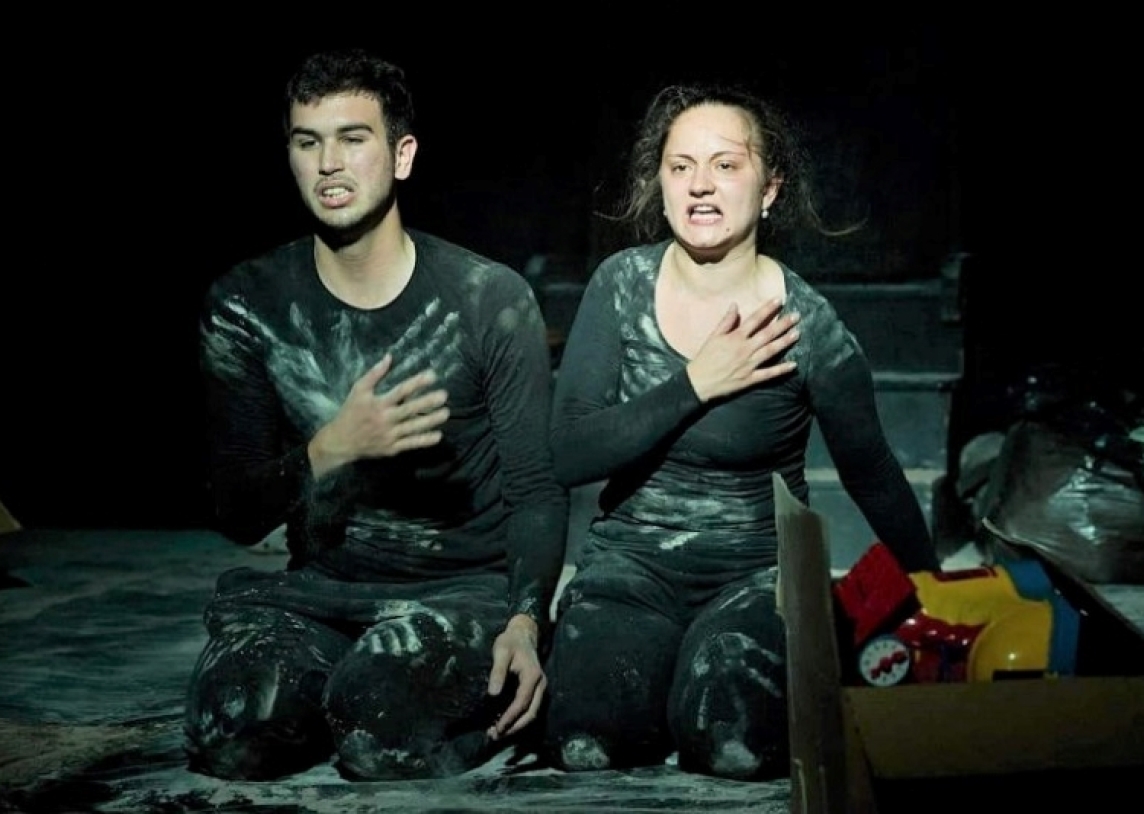- International Platform
- Content
Content
The Pain of a Shattered Childhood
Author: Dorija Lilion
The Play Shattered Childhood is heartbreaking and painful, but skillfully performed, with some objections, which are not crucial. We have seen a part of how the war affected children, creating psychological weights for them that are not easy to carry through life.
Every war entails many truths. In the shadow of the official winner’s truth, because the winners are writing history, there is the loser’s one, and there are ours, yours and theirs, adults’ and, rarely mentioned, but currently the most interesting to us – children’s truth. Rarely does anyone remember that children were also participants of the war and contemplates the consequences the war left on them, often much more severely than on adults. We can see something more about how the war looked through the eyes of children in the play Shattered Childhood by authors and performers Vanja Čiča and Lorenco Tolić. The play talks about the war through the true confessions of children, now adults, who experienced the terror and uncertainty of the war days.
The play Shattered Childhood was performed live at the 54th PIF on September 19 in a rather intimate setting, in a small room with only about 20 spectators. I think that further contributed to the difficult but lonely atmosphere that prevailed throughout the play. The play is centered around the characters called Karlo and Marija, who are mostly embodied by Lorenco and Vanja. Occasionally, the characters become stuffed animals through which the performers can more easily evoke particularly difficult and impressive scenes. In addition, the play also features an animation of materials, i.e., parts of clothing that represent supporting characters, and a theater of shadows and animation of body parts in all known forms of rabbit, dog and birds. For animation, of course, children’s props are used, which also have the role of showing a clear form of post-traumatic stress.
Although adults, Karlo and Marija were stuck in wartime, which the performers are clearly shown in the characters’ reactions to sounds reminiscent of the time – from the sound of a siren to the radio noise that slowly brought great unrest and uneasiness to the stage and the audience, which is intensified by the rest of the story, where Karlo and Marija (now the stuffed animals) play the scene from the beginning of the war. The stuffed animals served well in this scene because they are soft and the movement penetrated through them more easily. Although, the blows to the head against the wall were not very audible, but visually it was enough. The most interesting moment in that scene was when Tolić started to take the batting out of the stuffed animal, which led to Karlo literally “tearing” himself from grief.
The sound of bullets also came from the radio. That sound set off a new wave of memories, this time animated by clothing. Each piece of clothing represented a different person who fell before Marija's eyes. Clothing was a great medium and solution due to its ease of movement and fast fall. Čiča skillfully animated the clothes and the features of the character could be felt through the movement itself, which was very interesting to me. Another particularly noticeable moment was the quarrel between Karlo and his mother, who looked into each other's eyes with palpable tension - bombs were falling, coffee was flowing, but the mother was completely broken, just the shell of a person from whom not a single tear comes out. But that’s why the whole scene actually cried for her. Hidden actors came to the rescue, moving and tearing down objects filled with water. At the time, since I wasn’t looking at the list of performers, I didn’t even know anyone else was running the set, but I was wondering how suddenly the pitchers overturned. It was a surprising moment of the strong message - everyone was crying except the person broken by grief. At that moment, I cried too, I had my mother's face crying in front of my eyes, and I imagined myself in that situation, that pain and fear and tears came by themselves.
Light and music played an important role because they emphasized the changes from the present to the past and back, and gave a special atmosphere of discomfort, sadness, significance. However, after strong praise, a little criticism arrives. Namely, during the play there were moments when the text was redundant, it had no function because we could read the plot from the actors. The text in those moments did not emphasize the action but acted like a somewhat superfluous narrative. In addition, the emotions and expressions of the actors were great and commendable. You could really see the pain on their faces and they acted like they were going through what they were acting.
All in all, the play Shattered Childhood is heartbreaking and painful but skillfully performed, with some objections, which are not crucial. We have seen a part of how the war affected children by creating psychological weights for them that are not easy to carry through life. I wonder what it is like for these people now, what kind of lives do they lead, have they stayed or abandoned these areas, can they remember those moments without too much pain or does it still feel real, like they are hiding in the basement and in the dark. I hope the darkness no longer hides them and that they have closed those basement doors behind them just like Karlo and Marija.
This publication is written in the context of the project "European Contemporary Puppetry Critical Platform"

